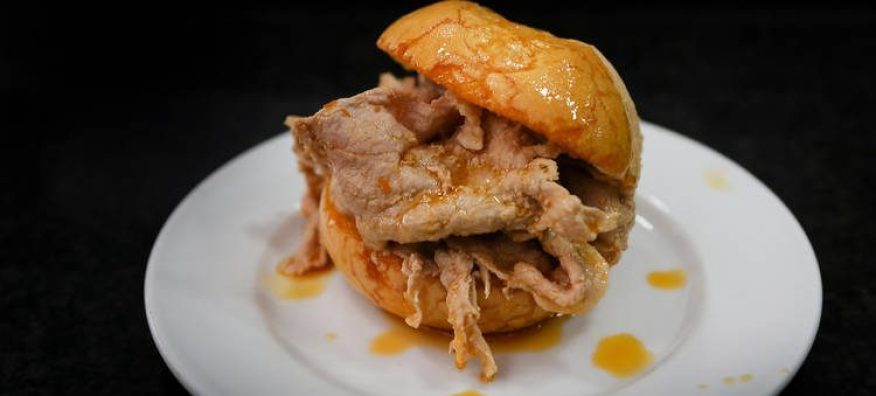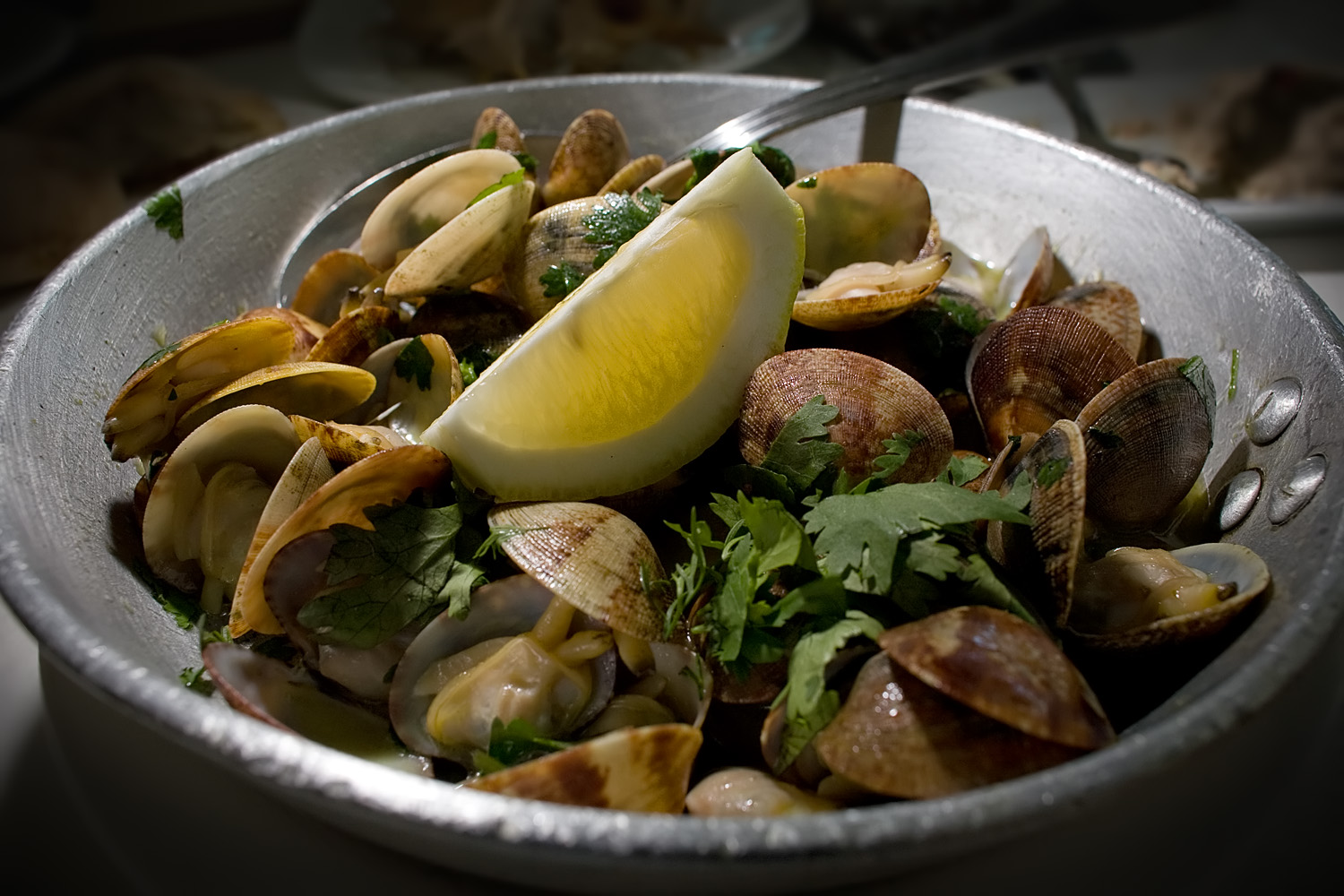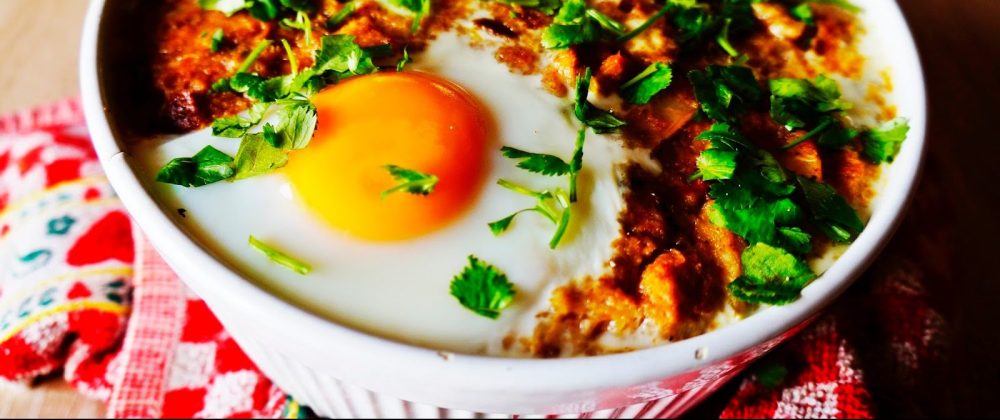Fried Foods of Portugal! You know you want it!

Though there’s every reason to tout the Mediterranean traits of the Portuguese diet, let’s be real, there’s also plenty of fried and fatty goodness to gorge on. On my latest trip to Portugal, I checked off a few savory and sweet items that had been on my long list of treats to taste. On this (ongoing) list, I also have items I return to on every trip—my go-to spots. Here’s what I discovered this time around as well as what I can’t resist. You can also find more information in our book, “Porto” about the incredible ingredients you can find inside Portugal’s Bolhao Market!
SAVORY SIDE
Salgados
There’s a category of finger foods in Portugal that I have a hard time resisting. They’re called “Salgados” (salty bites). As a declared savory-tooth, I’m always on the lookout for the best representations of these stuffed fritters. The most recognized would have to be the “pastel de bacalhau” (codfish cakes). The second would be the “rissol,” a half-moon pocket usually stuffed with shrimp, beef or chicken. I would say the third is the “croquete de carne,” a beef croquette. The “rissol” and “croquete” are enrolled in breadcrumbs while the “pastel de bacalhau” paste is spooned directly into the fryer, making it more delicate. I’m also a sucker for a “chamuça” (samosa in Indian), a trace of the Portuguese-Indian ties during colonization in Goa, Damão and Diu. It’s a bit more challenging to find chamuças, but salgados are staples of most cafés throughout the country. People snack on them any time of the day, but I would suggest that your first time tasting them be between breakfast and lunchtime when they’re freshest. A good place to start is at Café Beira Gare in Lisbon across from the Rossio Station. The place looks like a salgados factory, constantly churning out these salty snacks. Locals pack the bar to enjoy them with beer.

Francesinhas
It’s like a Philly Cheesesteak—yes, it’s delicious, but it may require a little research to find the right spots. Otherwise, you might end up merely having a mediocre experience. This is what happened to me with the “Francesinha,” a Porto institution that tends to show up on “best sandwich” lists. I had a Francesinha at a touristy spot one year; it was pretty good but I wasn’t convinced. I knew there had to be better—and there is! My latest Francesinha was so memorable that whenever I catch wafts of smoky roasted tomatoes and beer, I’m transported to that afternoon at A. Cunha II. This über local joint sat in front of me a monstrous masterpiece: Fried egg whites laced with melted cheese draped over slightly toasted bread slices and layers of fresh and cured meats soaked in a smoky beer sauce. A decadent Francesinha like this one isn’t a meal, it’s an experience. Check out our complete guide to Francesinhas in Porto!

Carabineiros & Pão Torrado
My two favorite types of restaurants in Portugal are the “Cervejaria” (beer hall) and “Marisqueira” (seafood restaurant). These two serve up a similar menu, focused on a wide assortment of Portugal’s heralded seafood (there are other items on the menu). Most spots serve their oceanic goodies with a side of toasted bread with globs of butter. One of the most extreme is Cervejaria Ramiro in Lisbon, which offers no side dishes only the bread—mounds of it! Ever since Anthony Bourdain spotlighted it on his trip to the city, there’s a long line to get in, but it’s been worth the wait every time. I like to kick off my fatty feast at Ramiro with Portugal’s “Porco Preto presunto” (cured ham), followed by a couple of orders of Carabineiros (scarlet shrimp). These grilled beauties might not seem threatening at first glance, but remove their colossal heads and give them a squeeze over your plate. Salty, smoky, garlicky guts will come spilling down. Enter buttery bread. The creaminess of the butter mixed with the richness of the guts is an assault on the senses. So much so, that the room might begin to spin. Your dinner date points at your face. Something about pieces of shrimp skin everywhere … his voice becomes a blur. You grunt and gesture his advice away, as the folks waiting at the door for a table giggle and point at the woman madly ripping apart shrimp heads and scarfing down bread. I wish I could say I was exaggerating.

Bifanas
Nothing is fattier than pork braised in lard … That’s precisely what makes the “bifana” (pork cutlet sandwich) so damn delicious—at least traditionally. When I was a kid traveling with my family from Lisbon to the countryside, it was our ritual to stop for bifanas in Ponte de Sor, a town in upper Alentejo on the way to our destination (Bemposta do Campo). I don’t recall the name of the snack bar, but I remember the joy of eating these sandwiches. Years later, I traveled with my husband to visit his family in Alentejo and we stopped in Vendas Novas, where I had the best bifanas ever. A paper-thin cutlet dripping in a garlicky sauce was slapped between a crusty, slightly toasted roll. They were so good that I had six that evening (seriously!). Since we don’t always make it out to the back roads on each trip, we kill our bifana cravings immediately in Lisbon—more than a day hardly ever goes by before we have one at Café Beira Gare. My latest discovery was Conga in Porto. This was a completely different bifana experience. Instead of a paper-thin culet, or one slightly curled at the tips, Conga packs a roll with a ball of shredded pork soaked in a fiery sauce. Can’t wait to keep on discovering: Mission bifana continues.

SWEET SIDE
Requeijão & Doce de Abóbora
After spending the afternoon touring Quinta do Ribeiro Santo in the Dão with winemaker Carlos Lucas, we were treated to one of the most soulful dinners I’ve had in Portugal (details to come in a future post). Our restaurant, Santa Luzia, is located in the historic city of Viseu. Our fantastic meal ended with requeijão (cheese curd) and doce de abóbora (pumpkin preserve). It wasn’t the first time I was having requeijão, but it was one of my best experiences. The cheese came in individual blocks and was served with a side of the preserve. The combo is typical of the central inland regions of Portugal that make up the Beira Interior. These areas are home to the highest mountain in Portugal, the Serra da Estrela, where the country’s most famous cheese is produced. I can’t get the silkiness of the cream cheese out of my memory. The pumpkin preserve was earthy, not overly sweet or jammy. With this dessert on my mind for the remainder of the trip, I ordered it at another restaurant in Lisbon. It was good but didn’t compare. It haunts me.

Pasteis de Chaves
When it comes to sweet and savory pastries, Portugal has no shortage of mouthwatering options. And, in some cases, one pastry does double duty. That’s the case with my newest discovery, the “Pasteis de Chaves,” a delicate puff pastry with a variety of fillings. Since the 1800s, this pastry has been produced in northern Portugal in the city of Chaves. Where would I suggest tasting this delectable treat? “Loja dos Pasteis de Chaves” is a Porto shop dedicated to these regional treats. We tried the traditional veal—I could have had 10! Its sweet counterpart was just as dreamy—a chocolaty center wrapped by waves of fine flakiness. You can’t go wrong with these! Other fillings include veggies, codfish, chicken and egg cream and almond.

Bolo de Bolacha
Growing up, my favorite Portuguese cake was the “Bolo de Bolacha.” It’s a tower of coffee-dipped Maria cookies and sugary buttercream. Over the years, my aunts in Portugal graced our birthday and holiday tables with it. This Christmas, my mother revived the tradition in the U.S. and surprised us with a huge cake. There was plenty to enjoy there and take home! Many typical restaurants in Portugal will put it on their menu, so you shouldn’t have trouble finding it. When I eat at Pinoquio Lisbon, I can never skip it. Their version is authentic and delicious. If you happen to come across one that’s too dry, ask for an espresso and pour it over the cake. Problem solved!

Croissants de Chocolate
It was a rainy November afternoon, so we stopped and sat under one of the umbrellas on the sidewalk outside Café Benard in Lisbon. The wet weather hadn’t deterred folks from strolling through the cobblestoned streets of this busy and bright Chiado neighborhood—and the café kept packing them in. Above us dangled a tiny heater—we couldn’t have been cozier. We ordered espressos and two chocolate croissants—the house specialty. Baked on-site, the fluffy croissants are filled to order with your choice of chocolate, egg cream or strawberry jam. What a sweet way to stop for a little while.

Our decadent list only scratches the surface. So why not come join us on a delectable pastry tour, food tour, or private chef experience in Portugal!
To tasty discoveries!






